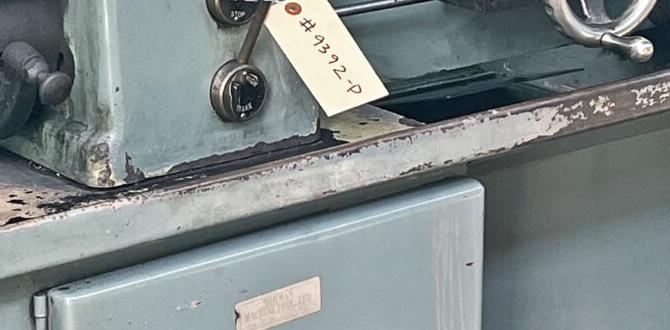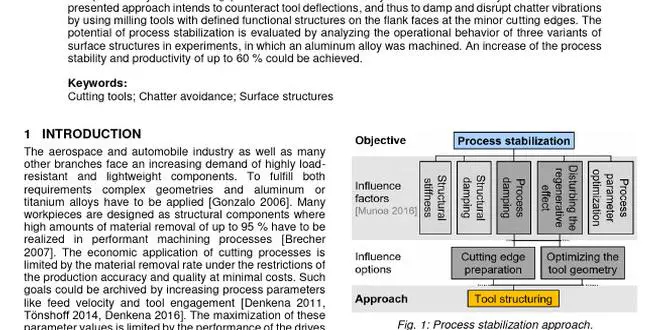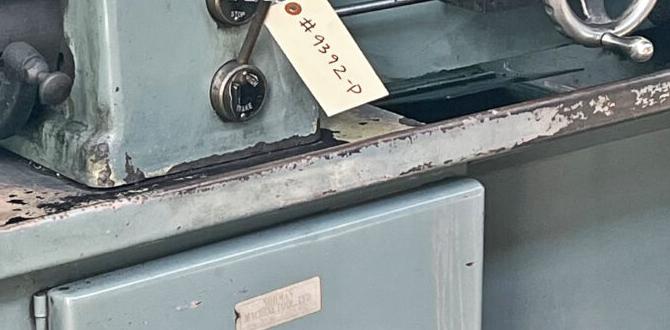Tialn ball nose end mills are excellent for HRC60 steel, offering speed and longevity due to their specialized coating, making them a reliable choice for tough materials.
Working with hardened steel can be tough, especially when you’re just starting out. You might find that your tools wear out quickly or struggle to cut cleanly. This is a common challenge, but the right tool can make all the difference! Today, we’re going to talk about a specific type of end mill that’s a real game-changer for HRC60 steel: the TiAlN (Titanium Aluminum Nitride) coated ball nose end mill. We’ll cover what makes them special, how to use them effectively, and why they’re becoming a go-to for many machinists looking to tackle hardened materials. Get ready to discover a tool that can boost your accuracy and extend your tool life!
What is a Ball Nose End Mill and Why is it Special for Steel?
A ball nose end mill, also known as a radius end mill, has a tip shaped like a ball or hemisphere. This unique shape is super useful for creating curved surfaces, fillets, and cavities. Unlike flat-bottomed end mills, the ball nose can cut in multiple directions without leaving sharp corners, making it ideal for complex 3D shapes.
Now, when we talk about hardened steel, particularly materials hardened to HRC60 (which is quite hard!), regular end mills often struggle. They can overheat, lead to excessive tool wear, and result in poor surface finish. This is where specialized coatings come into play.
The Power of TiAlN Coating
The “TiAlN” in TiAlN ball nose end mill stands for Titanium Aluminum Nitride. This isn’t just a fancy paint job; it’s a thin, hard coating that’s applied to the end mill through a process called Physical Vapor Deposition (PVD). Here’s why it’s so effective for tough materials:
Extreme Hardness: TiAlN is incredibly hard, which helps the cutting edge resist wear, abrasion, and chipping. This is crucial for cutting materials as hard as HRC60 steel.
High Heat Resistance: When you machine steel, friction creates a lot of heat. TiAlN forms a protective oxide layer at high temperatures, which prevents the coating from breaking down. This allows you to run at higher speeds without damaging the tool.
Reduced Friction: The coating also has a lower coefficient of friction than bare carbide. This means less material sticks to the cutting edge (reducing “built-up edge”) and the tool cuts more smoothly.
Improved Lubricity: The aluminum in the TiAlN forms a stable aluminum oxide layer under heat, which acts like a lubricant, allowing the chips to flow away more easily.
Together, these properties mean a TiAlN coated ball nose end mill can handle the heat and toughness of HRC60 steel much better than uncoated tools, leading to longer tool life and cleaner cuts.
Why Choose a Ball Nose for HRC60 Steel Applications?
The combination of a ball nose geometry and a TiAlN coating is particularly well-suited for machining HRC60 steel in several common applications:
Mold and Die Machining: This is a massive area where hardened steels are used. Ball nose end mills are perfect for milling complex cavities, gravers, and intricate features found in molds and dies. The TiAlN coating ensures tool longevity when working with these demanding parts.
Aerospace Components: Many aircraft parts are made from hardened alloys for strength and durability. Ball nose end mills help create the complex, aerodynamic shapes required in this industry.
Medical Implants: Precision and biocompatibility are key here. Hardened stainless steels are often used, and the smooth finishes achievable with ball nose end mills are essential.
High-Performance Tooling: Creating other tools or fixtures often involves machining hardened steel. A ball nose end mill with TiAlN can be used for profiling, pocketing, and creating specific geometries.
Adaptive Clearing Strategies: Advanced machining strategies like adaptive clearing, where large amounts of material are removed quickly and efficiently, benefit greatly from tools that can withstand high-load, high-heat conditions. The combination of ball nose geometry and TiAlN coating makes them ideal candidates for these toolpaths.
Understanding the “40 Degree” Aspect
You might see “40 degree” mentioned with ball nose end mills, especially in relation to HRC60 steel and adaptive clearing. This typically refers to the helix angle of the flutes. A steeper helix angle (like 40 degrees) can offer a few advantages:
Smoother Cutting Action: It can lead to a more shearing action, resulting in a smoother cut, reduced chatter, and better surface finish.
Improved Chip Evacuation: A well-designed helix helps to push chips away from the cutting zone more effectively.
Higher Material Removal Rates: In some cases, a better chip evacuation and smoother cut can allow for higher feed rates and depths of cut.
For demanding applications like machining HRC60 steel, a 40-degree helix ball nose end mill with TiAlN coating is precisely engineered to maximize performance and tool life.
Choosing the Right TiAlN Ball Nose End Mill
Selecting the correct end mill is crucial for success. Here’s what to consider when looking for a TiAlN ball nose end mill for HRC60 steel:
1. Material of the End Mill
While the coating is TiAlN, the base material of the end mill itself is important. For hardened steel, you’ll almost always want a Carbide end mill. Carbide is much harder and more rigid than High-Speed Steel (HSS) and can withstand the forces and temperatures involved in machining hard materials.
2. Number of Flutes
The number of cutting edges (flutes) on an end mill affects its performance:
2 Flutes: Generally best for softer materials or when you need excellent chip clearance in hardened steels, allowing for deeper cuts and better heat dissipation. Often preferred for slotting and pocketing.
3 Flutes: A good all-around choice. They offer a balance between material removal rate and surface finish, and can handle hardened steels well.
4 Flutes: Provide better rigidity and surface finish compared to 2 or 3 flutes, but can have more trouble evacuating chips in deeper pockets. They are often used for finishing passes or when rigidity is paramount.
For HRC60 steel, a 2-flute or 3-flute carbide end mill with a TiAlN coating is commonly recommended to manage heat and chip evacuation.
3. Diameter and Radius
Diameter: This will depend on the features you need to create. Common sizes range from very small (e.g., 1/8″) for intricate details to larger sizes (e.g., 1″). Always ensure the diameter is appropriate for the feature size and your machine’s rigidity.
Radius (Ball Nose): The radius determines the curvature of the tip. A larger radius produces a gentler curve, while a smaller radius can create more detailed shapes. For HRC60 steel, ensure the radius is proportional to the diameter for optimal strength.
4. Overall Length and Neck Relief
Overall Length: Standard, stub, or extra long lengths are available. Stub and standard lengths offer more rigidity, which is beneficial for hardened steel.
Neck Relief: Some end mills have a reduced shank diameter behind the cutting edges (neck relief). This allows the tool to cut deeper into pockets or near raised shoulders without colliding with the workpiece or fixturing.
5. Coating Quality
Not all TiAlN coatings are created equal. Reputable tool manufacturers use advanced PVD processes to ensure a uniform, dense, and well-adhered coating. Look for brands known for their quality.
Here’s a quick comparison table for common flute counts on TiAlN ball nose end mills for hardened steel:
| Number of Flutes | Best For | Pros for HRC60 Steel | Cons for HRC60 Steel |
|---|---|---|---|
| 2 | Aggressive material removal, slotting, pocketing | Excellent chip clearance, handles heat well, good for deeper cuts. | Can produce a rougher finish than higher flutes. |
| 3 | General purpose, good balance of MRR and finish | Good balance of chip evacuation and surface finish, suitable for mid-range speeds. | Can get clogged in deep pockets compared to 2-flute. |
| 4 | Finishing passes, rigidity-critical applications | Improved rigidity and surface finish, good for light finishing cuts. | Poorer chip evacuation, more prone to chip recutting in roughing. |
Setting Up Your Machine for Success
Using a TiAlN ball nose end mill effectively on HRC60 steel involves more than just having the right tool. Proper machine setup is crucial.
1. Spindle Speed (RPM) and Feed Rate (IPM/mm/min)
This is where things get a bit technical, but we’ll keep it simple. Getting the speeds and feeds right is key to preventing tool breakage and achieving a good finish. These parameters depend on:
End Mill Diameter: Larger diameters generally require slower RPMs.
Material Being Cut: HRC60 steel is hard, so you’ll likely need lower speeds and specialized feed rates.
Machine Rigidity: A sturdy machine can handle higher feed rates.
Coolant/Lubrication: Adequate cooling/lubrication allows for higher speeds and feeds.
General Guidelines (Always consult your tool manufacturer’s recommendations first!):
Cutting Speed (SFM – Surface Feet per Minute): For carbide tools in HRC60 steel with TiAlN, you might start in the range of 100-250 SFM.
Calculate RPM: RPM = (SFM 3.82) / Diameter (in inches)
Example: For a 1/2″ diameter end mill at 150 SFM: RPM = (150 3.82) / 0.5 = 1146 RPM.
Chip Load (Load per Tooth): This is the thickness of the material each cutting edge removes. It’s crucial for preventing tool wear. For HRC60 steel, you’ll likely be in the 0.0005″ – 0.002″ range per tooth, depending on diameter and rigidity.
Calculate Feed Rate: Feed Rate (IPM) = Chip Load (per tooth) Number of Flutes RPM
Example: For the 1/2″ end mill (3 flutes, 1146 RPM) and a chip load of 0.001″ per tooth: Feed Rate = 0.001 3 1146 = 3.44 IPM.
Key Takeaway: Start conservatively. It’s always better to run a little slower and slower, then gradually increase if the cut is smooth and the tool isn’t showing premature wear. Many CAM software packages have built-in calculators or databases for this.
2. Depth of Cut and Stepover
Depth of Cut (DOC): This is how deep the end mill cuts into the material per pass. For HRC60 steel, you’ll generally use much shallower depths of cut compared to softer metals. A common starting point might be 0.010″ – 0.050″ for roughing, depending on the diameter of the end mill. Smaller diameters require significantly smaller DOCs.
Stepover: This is how far the tool moves sideways on each pass. For roughing passes, a 40-50% stepover is common. For finishing passes, you’ll use a much smaller stepover (e.g., 10-20%) to create a smooth surface.
3. Coolant and Lubrication
Machining hardened steel generates significant heat. Proper cooling is essential for tool life and part quality.
Flood Coolant: A continuous flow of coolant is ideal for maximizing tool life and preventing thermal shock.
Mist Coolant/Lubrication: For smaller machines where flood coolant might be impractical, a mist system can provide the necessary lubrication and cooling.
Through-Spindle Coolant: If your machine has this feature, it’s highly effective as coolant is delivered directly to the cutting edge.
Dry Machining (with caution): In some very specific scenarios with excellent chip evacuation and material properties suited for it, dry machining might be attempted, but it’s generally not recommended for HRC60 steel due to heat buildup.
4. Tool Holding and Machine Rigidity
Secure Tool Holder: Use a quality tool holder (e.g., ER collet chucks, shrink-fit holders) that provides good runout. Excessive runout will lead to uneven cutting, chatter, and premature tool wear – especially problematic with hard materials.
Rigid Machine: Ensure your milling machine is rigid and all axes are properly gibbed. Any play or vibration will be amplified when cutting hardened steel and can lead to tool breakage or poor finish.
Step-by-Step Guide: Using Your TiAlN Ball Nose End Mill
Let’s walk through a hypothetical scenario for machining a simple curved pocket in an HRC60 steel block.
Pre-Machining Checks and Preparation
1. Inspect the End Mill: Ensure your TiAlN ball nose end mill is new or in excellent condition. Check for any chips on the cutting edges or damage to the coating.
2. Secure the Workpiece: Mount your HRC60 steel block firmly in your milling machine vise or fixture. Use parallels if necessary to ensure it’s parallel to the machine table.
3. Set Up Your Work Coordinate System: Accurately establish your zero points (X, Y, Z datums) on the workpiece. This is critical for precision.
4. Load the End Mill: Securely load the end mill into a clean, high-quality tool holder. Ensure it’s seated properly. Install the holder into your machine’s spindle.
5. Program Your Toolpath: Using your CAM software, program the toolpath. For this example, we’ll assume you’re using an adaptive clearing strategy for the pocket and then a finishing pass.
Tool Selection: Select your TiAlN coated ball nose end mill (e.g., 1/4″ diameter, R0.125″) with appropriate cutting data.
Adaptive Clearing Pass: Define parameters like stepdown (e.g., 0.020″), stepover (e.g., 40%), and maximum material engagement. Use conservative speeds and feeds initially. Ensure proper coolant is active.
Finishing Pass: Program a parallel or contour finishing pass with a much smaller stepover (e.g., 10%) and potentially slightly higher but still conservative speeds and feeds to achieve a smooth surface finish.
Machining Process
1. Z-Axis Setup: Carefully indicate the top surface of the workpiece in your chosen XY location. Then, using a tool length setter or by carefully jogging, set your Z zero point. The depth of cut for the first pass is paramount – start shallow.
2. Initial Move to Depth: Program the machine to move to the starting Z depth for your first roughing pass.
3. Start the Adaptive Clearing: Initiate the machining process. Observe the cut closely! Listen for unusual noises (chatter or grinding) and watch the chip formation.
If it sounds good and chips are flowing cleanly: Continue the program.
If you hear chatter or see poor chip control: Immediately stop the machine. Re-evaluate your speeds, feeds, depth of cut, or stepover. You might need to reduce them further.
4. Monitor Tool Wear: Periodically pause the machine (safely) and inspect the end mill for signs of excessive wear, chipping, or melting. If wear is excessive, stop and consider adjustments.
5. Complete Roughing: Allow the adaptive clearing program to finish.
6. Execute Finishing Pass: Once the roughing is complete, load your finishing toolpath. Run this pass with a small stepover and appropriate parameters to achieve the desired surface finish. This pass typically uses a shallower depth of cut and may run at a slightly higher spindle speed if tool conditions allow, but always prioritizes finish.
7. Part Ejection/Removal: Once machining is complete, safely remove the finished part from the machine. Inspect for surface finish, dimensional accuracy, and any signs of tool-related issues.
Example Parameters for a 1/4″ TiAlN Ball Nose End Mill (HRC60 Steel)
These are illustrative and should be used as a starting point. Always refer to manufacturer data.
| Parameter | Adaptive Clearing (Roughing) | Finishing Pass |
| :———————– | :————————— | :—————– |
| End Mill Type | TiAlN Ball Nose Carbide | TiAlN Ball Nose Carbide |
| Diameter | 0.250″ | 0.250″ |
| Radius | 0.125″ | 0.125″ |
| Number of Flutes | 3 | 3 |
| Material | HRC60 Steel | HRC60 Steel |
| Spindle Speed (RPM) | 1000 | 1200 |
| Chip Load per Tooth (in) | 0.0008 | 0.0005 |
| Feed Rate (IPM) | 2.4 | 1.8 |
| Axial Depth of Cut (in) | 0.020″ | 0.







